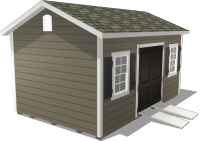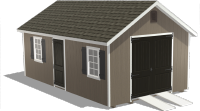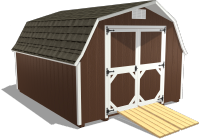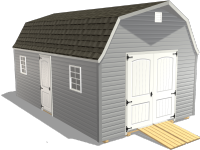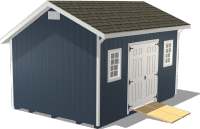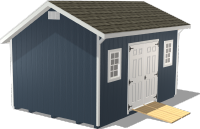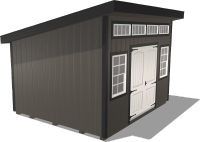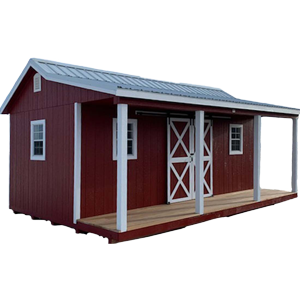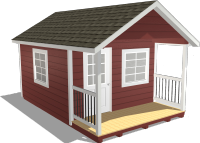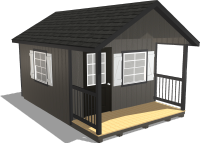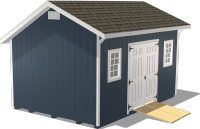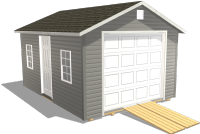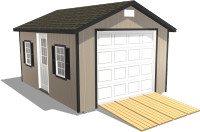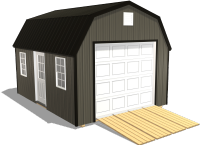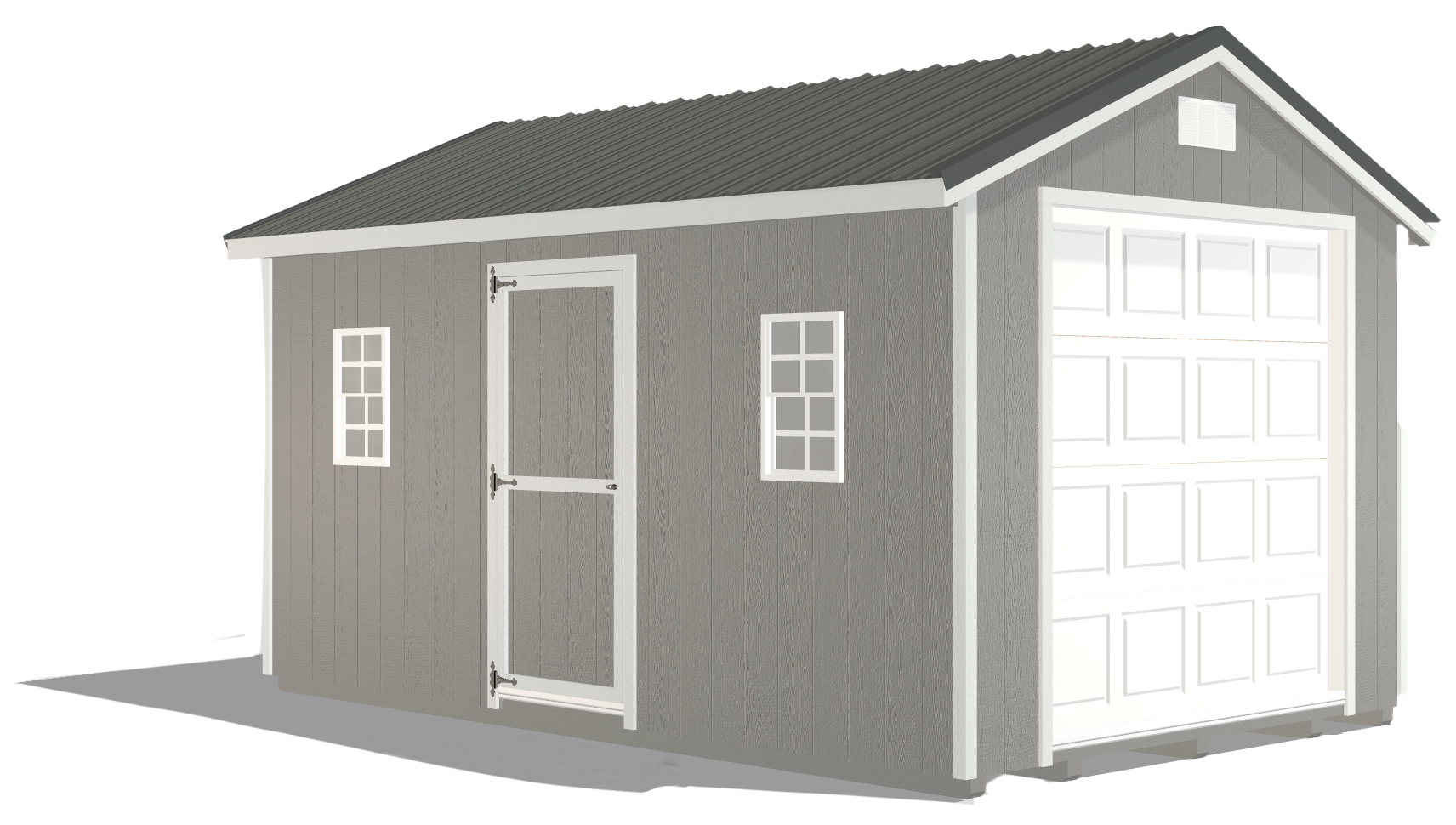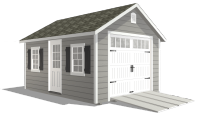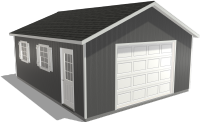Save Money and Enhance Soil Quality With a Compost-Heated Greenhouse
by Dakota Storage Buildings, on June 13, 2025

Gardening with a greenhouse can be incredibly rewarding — but only when your soil works with you, not against you. If your plants are growing slowly, producing underwhelming yields, or showing signs of disease or stress, your soil might be the culprit.
Many greenhouse gardeners don’t realize that even the most advanced lighting and watering systems can’t compensate for poor soil quality.
The good news? There’s a natural, budget-friendly solution that transforms tired soil into a thriving ecosystem for your plants: composting.
Not only can compost improve soil health, but it can also help heat your greenhouse. Your food scraps and yard waste can become both a superfood for your soil and a sustainable source of warmth for your growing space.
Let’s dig into how a compost-heated greenhouse can save you money and help your plants thrive.
Understanding Greenhouse Composting and Its Benefits
At its core, composting is the natural process of recycling organic materials, like kitchen scraps and yard clippings, into rich, dark humus packed with nutrients.
Microorganisms, fungi, and even worms break down this organic matter, creating a powerful, all-natural soil.
Why compost in your greenhouse?
- Improved Soil Fertility: Compost adds essential nutrients like nitrogen, phosphorus, and potassium.
- Bigger, Healthier Yields: Plants grow faster and stronger in compost-rich soil.
- Cost Savings: You’ll spend less on synthetic fertilizers and soil conditioners.
- Eco-Friendly Gardening: Composting reduces landfill waste and supports a circular garden ecosystem.
- Natural Heat Source: Compost generates heat, which can help warm your greenhouse in cooler seasons!

Starting your own compost system is easier than you might think, and you can do it inside your greenhouse or just outside the walls for easy access.
Step-by-Step Setup
- Choose a Location: Ideally, place your compost bin or pile where it’s accessible but not in the way. If you want to capture heat, position it inside the greenhouse or against an interior wall.
- Pick Your Container: Use a compost tumbler, bin, or DIY pile. Just ensure there’s good airflow and easy access for turning.
- Layer Your Materials: Start with a base of coarse "brown" material like dried leaves or shredded cardboard, then alternate layers of green and brown compostables.
- Monitor Conditions: Your pile should stay as moist as a wrung-out sponge and have plenty of air circulation. Turn it weekly to help speed decomposition.
Pro Tip: A compost thermometer is a handy tool to ensure the pile is heating up properly, especially if you’re counting on it as a supplemental heat source.
Best Materials for Effective Composting
Not all waste is compostable. Here’s what to include, and what to avoid, for a productive pile.
Compost This (Greens & Browns):
- Greens (nitrogen-rich): Fruit & veggie scraps, coffee grounds, grass clippings, plant trimmings.
- Browns (carbon-rich): Dry leaves, straw, shredded newspaper, cardboard, sawdust (untreated wood).
Skip These:
- Meat, bones, or dairy (they attract pests and smell)
- Greasy foods or cooking oil
- Diseased plant material
- Chemically treated wood or plants
Composting Rule of Thumb
Aim for a ratio of 2–3 parts brown to 1 part green to keep your pile balanced and odor-free.
Browns (like dried leaves, cardboard, or straw) provide carbon, which helps absorb moisture and reduce smells, while greens (like fruit scraps or grass clippings) add nitrogen, which fuels microbial activity.
Too much green can make your pile soggy and smelly; too much brown can slow the composting process. If your pile smells like ammonia, add more browns. If it’s dry and not breaking down, mix in more greens.
When you’re gardening with a greenhouse by utilizing composting, striking the right balance keeps the decomposition process active and your compost healthy.
Choosing the Right Composting Method: Vermicomposting vs. Hot Composting
There are two main composting approaches that work well in greenhouse settings.

Vermicomposting (Worm Composting)
This involves using red wigglers to break down food waste in a worm bin. It's ideal for small-scale greenhouse setups or gardeners with limited space, as worm bins can be kept indoors or in a shaded greenhouse corner.
Vermicompost is rich in nutrients and beneficial microbes, making it a powerful soil amendment. Plus, it’s nearly odorless and requires minimal maintenance once established.
- Best For: Small-scale gardeners with limited space.
- Benefits: Produces worm castings, an incredibly potent soil additive.
- Setup Tips: Keep worm bins in a dark, moist spot; avoid meat, dairy, and citrus scraps.
Hot Composting
A traditional, fast method where microbial activity generates high heat (130–160°F). This high temperature helps kill weed seeds and pathogens, producing finished compost in as little as 4–6 weeks.
Hot composting works best with larger piles and consistent turning to maintain heat and airflow. It’s a great option for gardeners who want a compost-heated greenhouse, need large volumes of compost quickly, and have access to plenty of materials.
- Best For: Larger compost piles or gardeners wanting faster results and a compost-heated greenhouse.
- Benefits: Kills most weed seeds and pathogens; produces compost in 1–3 months.
- Setup Tips: Keep your pile large enough (3x3x3 feet), turn it regularly, and monitor moisture.
Using Compost as a Heat Source
Here’s the unexpected bonus of composting: it naturally produces heat as materials decompose. If managed properly, a compost pile can reach internal temperatures over 140°F — perfect for providing supplemental warmth to a greenhouse in colder months.

How to Harness Compost Heat
- Location Matters: Place the compost pile inside the greenhouse or along the interior wall to radiate heat inward.
- Size Counts: Larger piles (at least 3x3 feet) generate more consistent heat.
- Insulate Smartly: Use straw bales or wooden frames around the pile to contain heat longer.
- Ventilation is Key: Ensure the pile is turned regularly to keep air flowing and heat building.
A compost-heated greenhouse won’t fully replace traditional heating systems, but it can lower energy bills, extend your growing season, and support a more self-sustaining garden.
Common Composting Mistakes and How to Avoid Them
Even the most passionate gardeners make composting mistakes—but they’re easy to fix.
Watch Out For:
- Too Much Green: Creates a wet, smelly pile. Add more browns to balance.
- Too Dry: Compost won’t break down if it’s parched. Moisten with water or green materials.
- Lack of Airflow: Leads to anaerobic (smelly) conditions. Turn your pile regularly.
- Composting the Wrong Materials: Avoid meat, dairy, or chemically treated items that disrupt the process.
When in doubt, remember the composting basics: balance, moisture, and air.
Using Finished Compost for Healthier Greenhouse Plants
Once your compost is dark, crumbly, and earthy-smelling, it’s ready to use!
How to Apply
- Mix Into Beds: Blend compost into raised beds or greenhouse soil to improve texture and nutrition.
- Topdress Containers: Add a layer to potted plants to boost nutrient content and retain moisture.
- Use in Potting Mixes: Combine with soil and sand or perlite for a homemade planting blend.
Adding compost regularly will strengthen plant roots, improve drainage, and reduce the need for chemical fertilizers, all while reusing your household and garden waste.
Make Compost Part of Your Greenhouse Routine
Composting is one of the most powerful, affordable tools you can use when gardening with a greenhouse. It improves your soil and boosts yields, but it can also help heat your greenhouse and reduce waste in the process.
Whether you’re a weekend gardener or growing year-round, starting a compost system is a step toward healthier plants, lower gardening costs, and a compost-heated greenhouse.
Want to dive deeper into gardening with a greenhouse? Download our free guide, "Beginner’s Guide to Greenhouse Gardening," and unlock even more tips to help your garden thrive.



